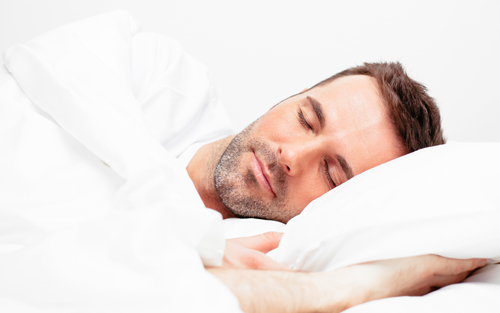
Your sleeping posture may be comfortable, but it could ultimately be the cause of some health issues. Improper sleep positioning has been linked to neck/back pain, poor circulation, sleep apnea, next day fatigue and even premature wrinkles. For the appropriate amount of sleep and tips to fall asleep faster, visit yourfootpalace.com/regular-sleep-promotes-healthy-minds/. For the common sleep positions and how they compare to one another, read on.
Sleeping On Your Side
Side Sleepers (Arm’s/Leg’s straight): Over 15% of adults find this position to be most comfortable. Although relatively few people sleep this way it does show to have positive benefits, notably its help for those with sleep apnea. Because the body is on its side gravity prevents the tongue from falling back into the throat passage, restricting airflow. This position has also been shown to help with acid reflux and alleviating back pain since the spine is elongated. The only downside to this is the increased likelihood of wrinkles via face to pillow contact throughout the night.
Side Sleepers (Fetal Position): By far the most popular sleep position with 41% of people favoring this pose, the benefits are fewer but the comfortability is definitely greater. This position is ideal during pregnancy (specifically lying on the left side) because it helps improve circulation in not only your body but the baby’s as well. Lying on your left side can also help relieve pressure being placed on your liver when you sleep. Although this is the most comfortable position, sleeping with your knees too tightly tucked and your chin tucked down into your chest/pillow can tighten the diaphragm, making it harder to breathe and leaving you sore in the morning. A trick to help with posture in this position is to tuck a pillow in between your knees.
Sleeping on Your Stomach
Stomach Sleepers: A majority of people find this pose to be uncomfortable and understandably so. Because you are on your stomach your neck and spine have a hard time lying flat, especially with a pillow under head, causing serious neck and back the next morning as well as trouble breathing. The upward angle of the neck constricts air flow and this is more so the case when the head is turned to either side. This angle also puts the most stress on the lower back of any sleeping position.
Sleeping on Your Back
Back Sleepers: Without a doubt, sleeping on your back allows for the greatest amount of support along the spine and neck. This support as well as spinal elongation helps to prevent upper and lower back pain as well as keeping your neck in a neutral position throughout the night. Keeping a pillow underneath the head will prevent acid reflux occurring during the night. One of the only downsides to sleeping on your back is airway blockage from your tongue. This can be a serious threat to those with sleep apnea due to the increased lack of breath. Your snoring might increase but with no face to pillow contact your likelihood of developing wrinkles earlier in life will definitely decrease.
Posture Affects Your Sleep
Although posture plays an important role in your sleep there are other factors such as your mattress and pillow type. For side sleepers placing a pillow between your legs helps to correctly align the spine. At the end of the day everyone falls asleep in the position which is most comfortable for them, but taking your health into consideration might just help you make the switch to a better night’s sleep.
(706) 521-5290
(678) 963-5958